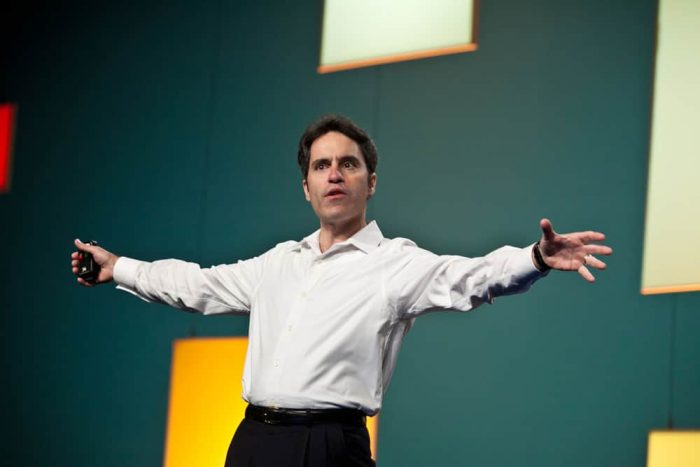Microsoft VP talks about OneDrive 'placeholders' vs 'selective sync' in Windows 10
5 min. read
Published on
Read our disclosure page to find out how can you help Windows Report sustain the editorial team Read more

Just when users had begrudgingly accepted Microsoft’s terms with OneDrive’s less-than-ideal integration with Windows 10, it looks like the company may be gearing up to throw users another curveball. Re-appointed head of Microsoft’s coalesced SharePoint and OneDrive businesses, Jeff Teper, recently shared some insights into changes coming to the services for users.
As is becoming common with corporate communications, Teper reached out to users via Twitter to announce the long-awaited next-gen sync client for OneDrive is landing on iOS and the Mac with support for offline viewing. But what about Windows? Mac and iOS support is great but does very little for the Windows users who have found the current OneDrive ‘selective sync’ integration lacking. Resident Microsoft watcher and reporter, Mary Jo Foley was able to catch up with Teper and sort out the mess that is becoming OneDrive.
Teper explained to Mary Jo, “Selective sync in OneDrive now provides ‘some of the scenarios that people want.’” However, Windows 8.1-style placeholders “mostly worked, but never integrated with the Windows file system, meaning some apps, APIs and command line tools didn’t work as they should.”
[pullquote align=”full” cite=”” link=”” color=”” class=”” size=””]OneDrive functionality should have been implemented at the file-system level, not the UI level, says Teper[/pullquote]
According to Teper, he and the OneDrive team are re-evaluating functionality at a file system level with the Windows team. Teper didn’t confirm nor deny the reemergence of Windows 8.1-like placeholder sync, but he is making it clear that the OneDrive team is working closely with the Windows team to come up with a solution that scales as well as fundamentally re-works file integration within Windows 10, and we’re hearing we might see this implementation around the time of Redstone, the next big update to Windows 10, unless plans change.
For those unfamiliar with Teper’s claims, the OneDrive team removed the arguably more convenient ‘placeholder’ integration found in older versions of Windows and Mac, while reassuring users that a new and improved method would fill the void. Until recently, those claims fell on the deaf ears of mostly Windows 10 users struggling to sort folders and assign documents using a seemingly inferior OneDrive ‘selective-sync’ integration method.
Placeholders essentially were KB size markers for every file stored in OneDrive. Placeholders were also viewable and manageable like native files found in File Explorer, meaning users could copy, paste, and download or move the items with relative ease to and from OneDrive. Unfortunately, even as condensed as placeholders were, they were still files with the potential to take up swaths of storage dependent on the size of a user’s OneDrive account and subject to online and offline availability. As ultrabooks, 2-in-1’s and tablets continue to sell SSDs with lower capacity storage limits, Microsoft attempted to preempt potential storage concerns by implementing a new OneDrive sync approach. For most, the new OneDrive sync has fallen well short of previous implementations.
The Future of OneDrive and SharePoint
Aside from being asked to leave his current position as vice president of Microsoft’s Corporate Strategy team and head up the newly combined SharePoint and OneDrive businesses, Teper was also given the businesses’ new mission by CEO Satya Nadella.
We want to make the (storage) experience consistent across users’ personal and professional lives. Browsing and sharing documents should be consistent. Yes, some things in business need to be more locked down. But those should be extra things on top, not a completely different experience.”
Primarily a SharePoint expert, in sitting down with Mary Jo, Teper opens up about the issues both the OneDrive and SharePoint teams ran into with the former structural divides in place at Microsoft. Previously, the OneDrive team was under the Windows division and as a result solely focused on consumer implementations of the service. A benefit to consumers but OneDrive’s consumer focus posed an issue for items such as mobile-device management and enterprise-level security for Microsoft as it attempted to expand the service. The opposite held true for SharePoint, being born of business-level usefulness, it’s rather complicated management settings are now benefiting from a consumer-simplicity approach.
Mary Jo also sees the potential at Teper’s fingertips to leverage SharePoint and OneDrive’s businesses resting atop Azure, to promote Microsoft’s new Power Apps to garner development of mobile apps for the platform.
As Microsoft moved from Windows 8.1 to Windows 10, the company, as well as its crown jewel operating system, underwent massive structural overhauls. Analogous to Windows 10 development, large portions of Microsoft’s management structure, engineering teams, and marketing departments were reorganized, decoupled, removed or reimplemented into different departments.
As much as observers are waiting for the dust to settle at Microsoft, it looks like the company is still attempting to find a fully integrated workflow among businesses and strategies. For OneDrive users, the return of Teper has already signaled a retraction on some questionable business policies. In the future, Teper may use his SharePoint knowledge to help structurally organize OneDrive for the expansion and utility it sorely needs.








